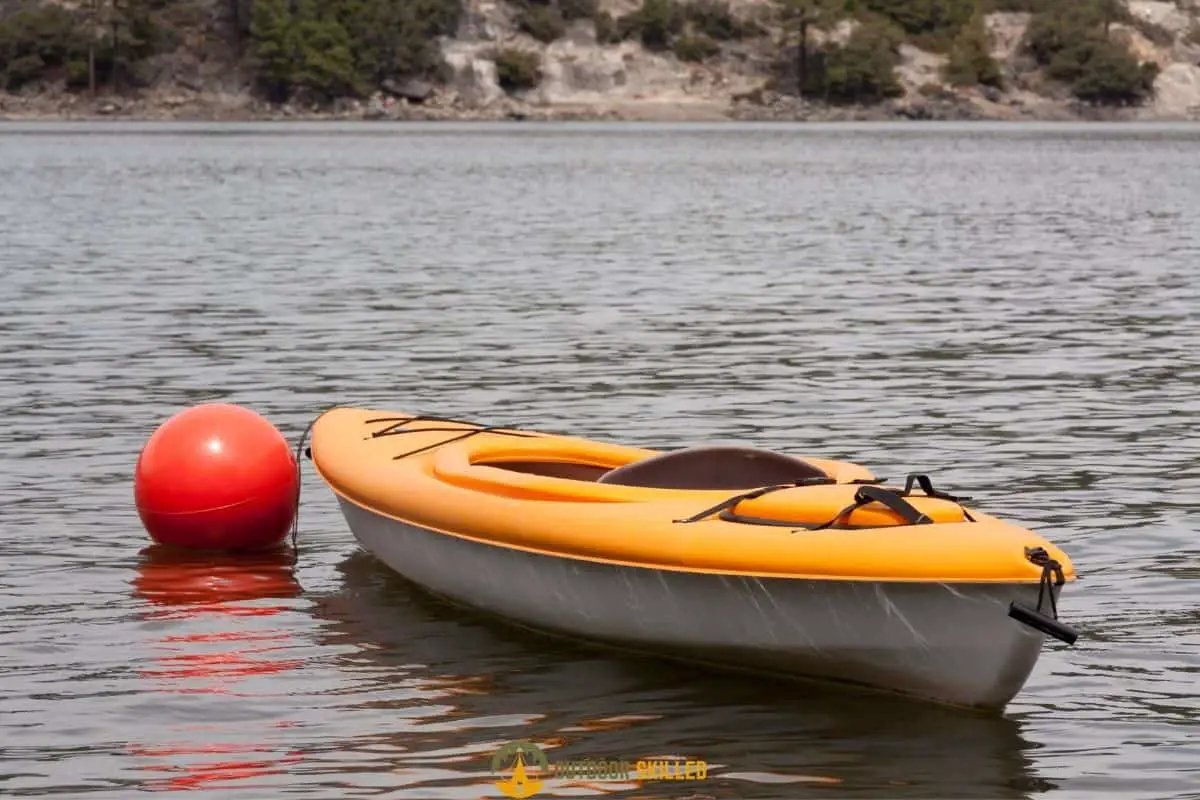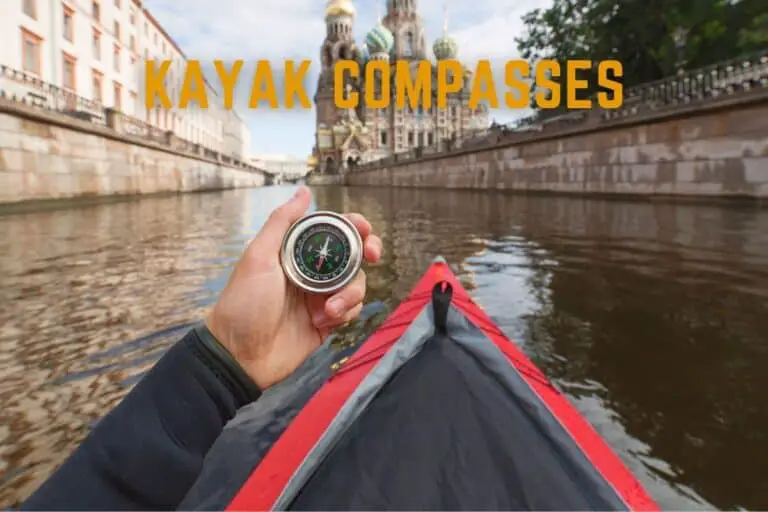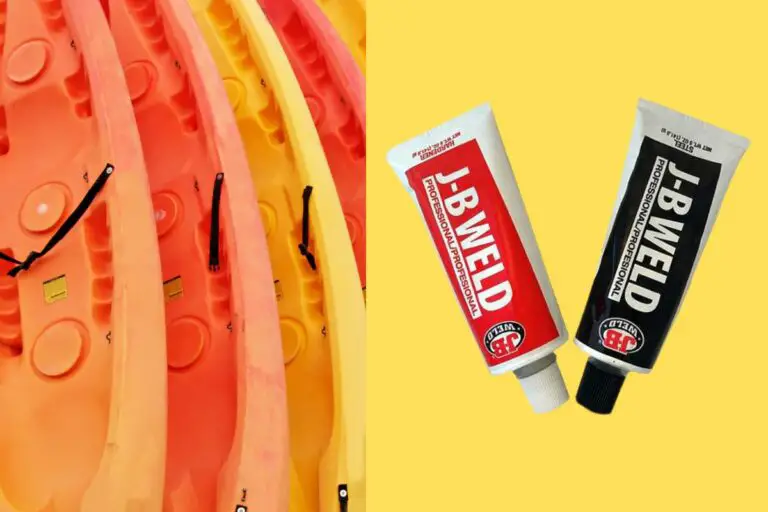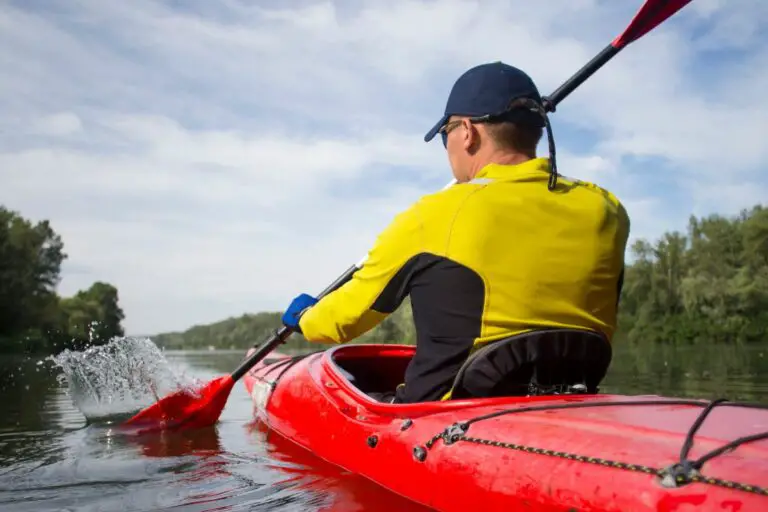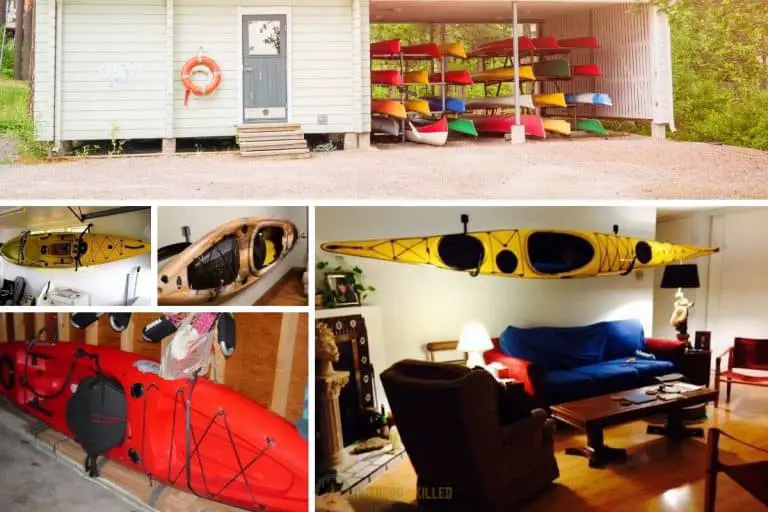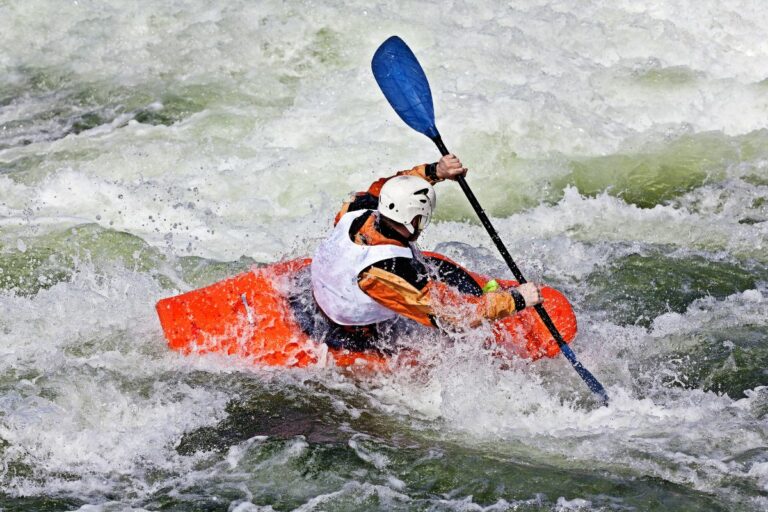How To Anchor A Kayak without a Trolley? DIY, No-Drill
Anchoring is very important to fish from a kayak effectively. It’s getting more and more popular among kayak anglers to use an anchoring trolley system to control their kayak’s position; however, some anglers want to avoid drilling holes in their kayaks to install it.
So, how to anchor a kayak without a trolley? You can anchor your kayak by using standard types of fishing anchors like folding grapnel anchors, claw anchors, or mud anchors. Choosing the type of anchor depends on the sea bottom where you’re fishing. There are also other methods to anchor your kayaks, like stake-out poles or drift chutes.
Keep reading to learn about different types of anchors and how to effectively anchor your kayak without having to drill a trolley system.
If you want to upgrade your kayak without breaking the bank, make sure to check my picks for the best Kayaks under $500 here as well.
Table of Contents
How to Anchor a Kayak?
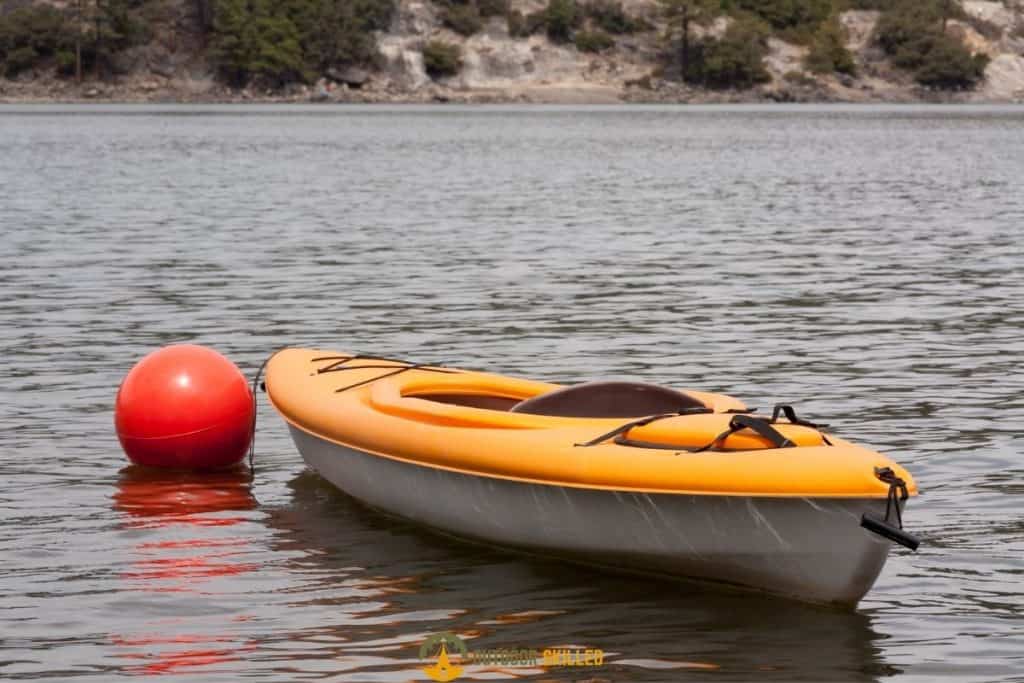
The standard method of making your kayak stay still is using a fishing anchor. These anchors are available in a vast range of shapes and sizes.
Choosing the type of kayak anchor will depend on the type of sea bottom where you’re fishing. So, it’s important to find the anchor that is best suited for your needs and the area you’re fishing in.
Now let’s take a closer look at different types of anchors to get a better understanding of when it’s best to use each one of them.
Types of Anchors
Folding Grapnel Anchors

This is the most common type of anchor for kayak fishing.
It’s designed typically with four folding flukes and a sliding collar to lock them in the position either opened or closed. It’s also compact once it’s folded, which makes it easy to store on a kayak.
This type of anchor is suited for most types of sea bottoms and will hold very well on rough or hard ground. It also works best on sandy or muddy bottoms.
It comes in 3 main weights, which are suited to cover different kayak fishing scenarios:
- 0.7kg Folding Grapnel Anchor – It’s suitable for shallow waters up to 20ft, low flow, and rough ground.
- 1.5kg Folding Grapnel Anchor – This is the most common size used on a kayak. It’s suitable for depths up to around 100ft, moderate flows, and most ground types.
- 2.5kg Folding Grapnel Anchor – It’s suitable for deeper water >100ft, faster tides, and most ground types.
You can check the anchor in the image on Amazon here.
Claw Anchors

Claw anchors are also known as bruce or sea hook anchors.
This type is designed with 3 fixed shovel-style flukes, and it is the most suitable to use on soft bottoms such as sand, mud, and gravel.
It comes in main 2 weights, which are suited to cover different kayak fishing scenarios:
- 1kg Bruce Anchor – It’s suitable for depths up to around 100ft, low to moderate tidal flows, and sandy/muddy/gravelly grounds.
- 2kg Bruce Anchor – It’s suitable for depths up to and over 100ft, moderate to fast tidal flows, and sandy/muddy/gravelly grounds.
You can check the anchor in the image on Amazon here.
Mud Anchors

This type of anchor is more popular with still-water and freshwater anglers
It is basically a heavy weight that can sink into soft mud, often found on lake beds, ponds, canals, and reservoirs. It can also be used in shallow saltwater in areas where there’s low flow. Its weight alone is enough to hold a kayak still on harder bottoms.
They come in two popular shapes, which are Mushroom Anchors and Pyramid Anchors.
Some anglers choose to make their own mud anchors by drilling a hole through a small house brick and attaching a loop of cord through it. Another method is filling a small flower pot with concrete and allowing it to set with a metal ring sticking out the top to attach your anchor line to.
You can check the anchor in the image on Amazon here.
An Alternative Method To Anchoring Your Kayak (Without A Trolley)
Another effective way to anchor your kayak without installing a trolley system is using stake-out poles.
A stake-out pole is basically a long pole usually made of fiberglass that can stick to the bottom of the water to anchor a kayak and hold it still. It mostly comes in lengths less than 12ft, so you can only use them in depths up to 12ft.

These poles are suitable for shallow flat waters like lake margins, canals, backwaters, skinny waters, or other shallow areas. They also work best with soft sandy bottoms that the pole and sink down into.
They are very simple to use. All you need to do is just push down the pole firmly into the bottom of the water and then tie it to your anchor cleat. Another way is to stick the pole down through a scupper hole.
You can check the pole in the image above on Amazon here.
Where to Position Your Anchor?
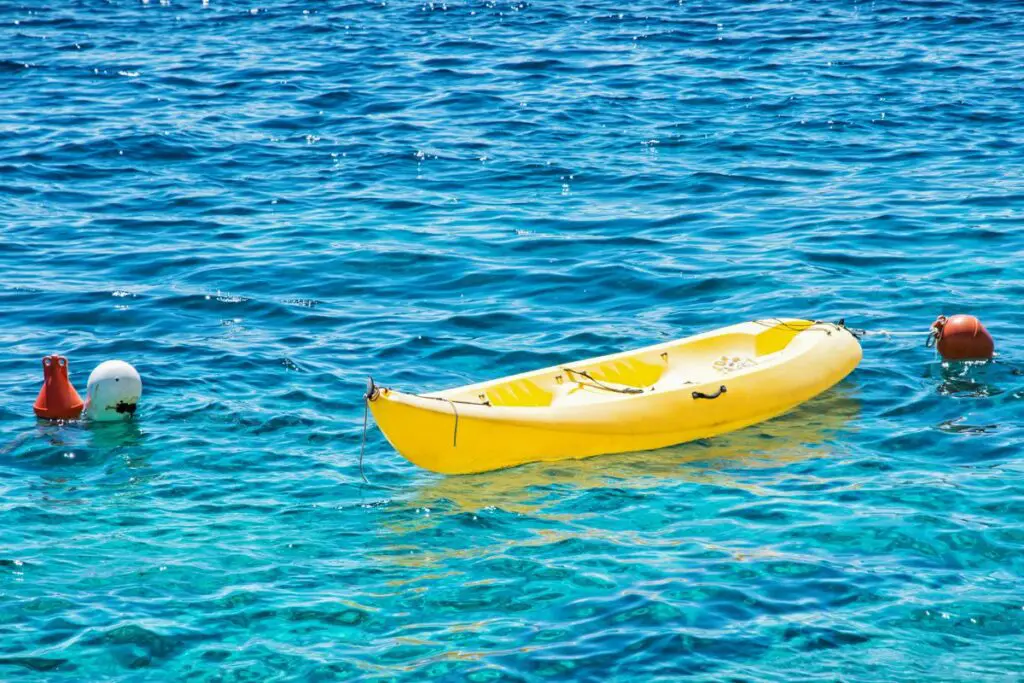
Your options when it comes to positioning your anchor are bow, stern, or side.
It’s best to avoid the side as much as possible, especially when the current is high. Your kayak is typically designed to handle water as it travels along its length, but that’s less efficient from the side.
The Bow and stern are the best choices, and each of them has its pros and cons.
Anchoring from the bow means you’ll be casting up current. This allows for a more natural presentation; however, you also have to be cautious of the anchor line that is in front of you.
Anchoring from the stern, on the other hand, means you’ll be casting down current. This is the most common way of anchoring and the most ideal way to fish when you’re using baits on the bottom. If you hook a fish, you’ll notice that your kayak will actually move as the fish moves.
But what if you want to switch your anchor’s position from bow to stern without getting out of the kayak? The best way to do this is by using an anchor trolley system.
What Is an Anchor Trolley System?
An anchor trolley system is a mechanism attached to the side of your kayak which gives you the ability to control and change the position of your kayak by changing the position of your anchor without getting out of the kayak or taking your anchor out of the water.
It consists of 3 main parts – two pulleys, a rope, and a ring. The anchor line is attached to the ring, so by pulling the rope to move the ring forward and backward along the length of the kayak, you’ll be able to change the point where the anchor line is attached to your kayak and switch your anchor position.
I have discussed anchor trolleys in great depth here, so make sure to check it out when possible.
Is an Anchor Trolley Really Necessary?
An anchor trolley can be necessary if you want to be able to quickly and easily switch your anchor position to adapt to the changes in current or wind while you’re out on the water.
Having more control over the position of your anchor is very important to any kayak angler, as it will help you cast more successfully and also increase your stability in the face of changing current and wind conditions.
How to Install a Trolley System Without Drilling?
The majority of kayak anchor trolley kits will require you to drill into your kayak to install them; however, some kayaks already have pre-drilled holes where you can attach your trolley system.
There are also other ways you could install an anchor trolley without drilling.
Check the following videos to learn how to install a trolley system without drilling:
What Is the Best Way to Prevent Your Kayak from Drifting?
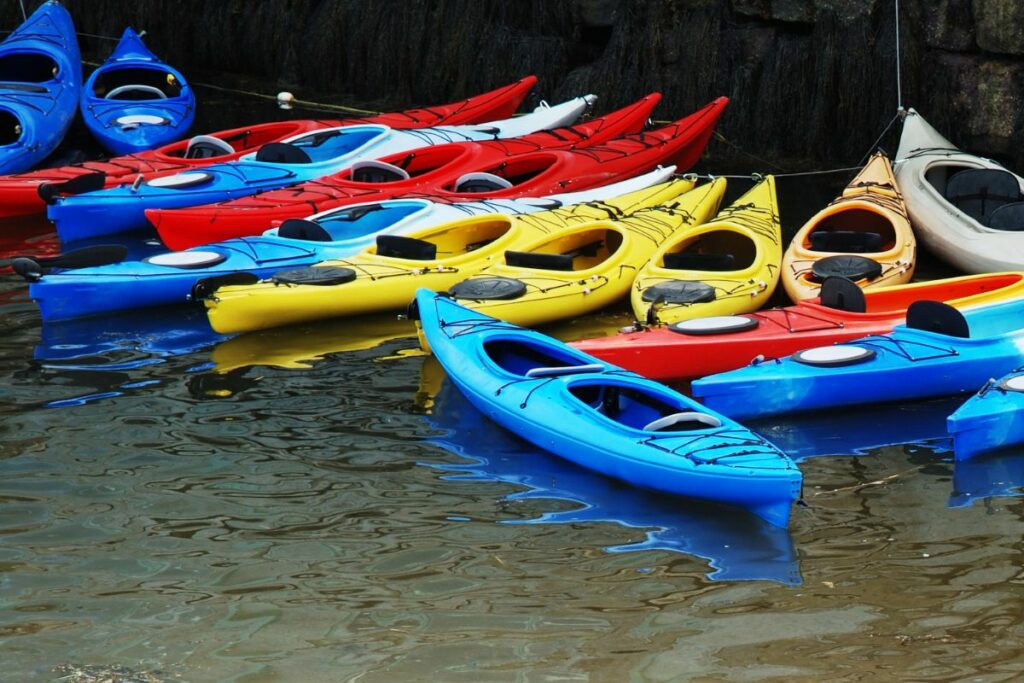
If you do not have an anchor, your kayak may keep drifting while you’re out on the water, and you will eventually lose control of it.
Most of the problems with drifting in a kayak are related to your paddling technique and body posture. Sometimes there may be a problem with the kayak itself or external forces.
So, here are some tips to prevent your kayak from drifting:
- Examine your kayak for any sign of damage on the side or the bottom that may be causing it to drift or spin.
- Work on improving your paddling technique and choose the right type of paddle.
- Your hands should be shoulder-width apart on the paddle, and your elbows should be at a 90-degree angle.
- Your paddle should sweep the water at the same distance from the kayak on each side.
- Keep your body posture straight while relaxing your shoulders and bending your legs.
- Avoid putting too much on one side of the kayak when moving, and distribute the weight evenly.
- Check the wind and current conditions before going out on the water to determine whether you’ll be going with or against their direction.
Related Questions
Can You Use a Drift Sock to Anchor a Kayak?
You cannot use a drift sock to anchor a kayak. Drift socks are used to slow down your drift when facing a strong wind or current, not to stop the vessel from moving. However, if you want to completely stop your kayak from moving, it’s recommended to use a standard anchor.
How Much Rope Do You Need for A Kayak Anchor?
Generally, an anchor rope should be twice as long as the depth of the water. So, if you are anchoring in 10 feet of water, you need to let out 20 feet of rope. Having more of the line out allows the anchor to drag and effectively catch the bottom.
Where to Store the Anchor On a Kayak?
It’s best to store the anchor at the center of the kayak to maintain the balance of the kayak and avoid hindering its performance. That is because carrying an anchor can add a significant amount of weight, which makes it a lot more difficult to paddle or pedal the kayak.
Kayak your way to Freedom
- On a budget? Check out the best fishing kayaks under $500 here and the best Fishing Kayaks under $1,000 here. Or Check the best Cheap Kayaks here.
- Going fishing? Here are the best Ocean fishing kayaks, and here are the best River Fishing Kayaks.
- You can also find the best Fly Fishing Kayaks here and the best Bass Fishing Boats here.
- A bit experienced? Check out the best modular kayaks here and the best tandem fishing kayaks here.
- Looking for something special? Check out my favorite Ducky kayaks here.
- Navigate your way with these awesome and beginner-friendly Kayak compasses.
- Going Hunting? These Duck hunting kayaks will give you an unfair advantage!
- Have a need for speed? These motorized kayaks will get you moving.
- Protect yourself from the sun with these Kayak shades, and make your kayak more comfortable with these Kayak seats.
- Keep your feet dry and warm with these superb Kayaking shoes.
- Going Kayaking in cold water? Stay warm with these Kayaking gloves.
- Paddle Less, Fish More with the Best Kayak Motors
- Looking to get a trolling motor on your kayak? Check out the best kayak trolling motor mounts here.
If you like this article, please share it or pin it, you can find the share buttons below. We will really appreciate it ❤️

